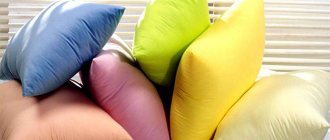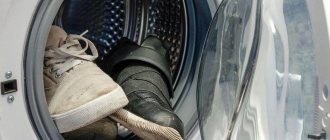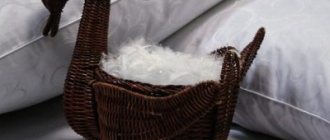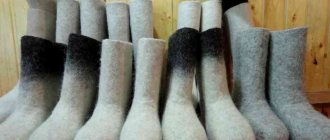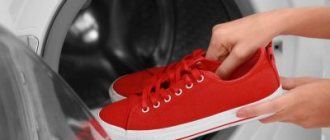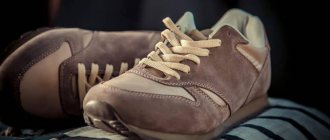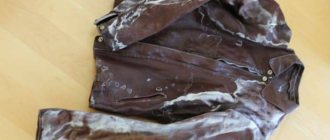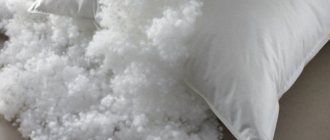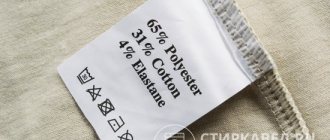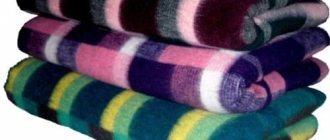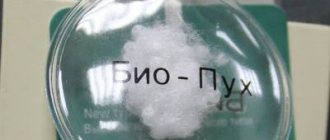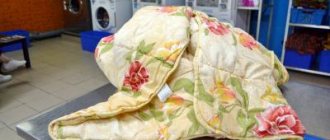Holofiber is a popular filler, the range of application of which is very wide. This is the production of clothing and toys, simple and orthopedic mattresses. It is often used in the production of bedding, such as blankets. The advantages of this material are obvious; maintenance is not particularly difficult. At the same time, some people are interested in how to wash a holofiber blanket in a washing machine?
Many people are confused by this point: the label states that the item cannot be washed. However, housewives have come to the conclusion through trial and error that water treatments are beneficial for blankets. They withstand the washing process quite easily, dry quickly, and do not lose their shape even after repeated washings.
The filler is not afraid of water and detergents. But the cases in which it is located may be contraindicated in the process of removing dirt in the washing machine. The business of cleaning has its own secrets and subtleties. Not every washing unit can achieve excellent results.
How to wash a holofiber blanket in a washing machine
- Roll the blanket into a loose roll. In this form it is more convenient to place it in the drum;
- It is also advisable to add balls for washing down jackets; if they are not available, tennis balls will do. They will help the washing machine do its job better because they knock dirt out of the fibers;
- Liquid detergents are preferable. Powder ones are less easy to wash out and an odor may remain. The quantity should be taken less than recommended; upon contact with holofiber, the product foams more than usual;
- Spin mode can be used;
- The drying function cannot be used;
- All that remains is to select the desired washing mode and put the unit into operation;
- It is advisable to repeat the rinse-spin cycle;
- After washing, you should not leave a clean blanket in the machine for a long time; you must immediately take it out and send it to dry.
Caring for blankets
Washing a holofiber blanket in a machine will reduce its lifespan by half. Therefore, it is recommended to clean such products. A blanket that is constantly looked after will last in perfect condition for at least 10 years. Here are some care tips:
- the blanket must be dried regularly in the sun, this will save you from unnecessary washing, and the product will be fresh and clean;
- if the blanket is dirty, it is better to go to a dry cleaner, where they will carry out the washing procedure without the risk of damage; the procedure is infrequent, and therefore not expensive;
- You can wash the blanket as needed, but you cannot bleach or chlorinate it at all;
- If there is no dirt, it is enough to wash the blanket 1-2 times a year.
Washing other items
Speaking about the blanket, a few words need to be said about holofiber pillows. Unlike blankets, washing pillows in a machine is prohibited. After several such washes, they will become unusable, or rather lose their shape and it will be extremely uncomfortable to sleep on them. Pillows can only be washed by hand.
To carry out the procedure, fill a basin with water and dissolve the washing gel; it can be replaced with regular shampoo. Place a pillow in the water and leave it for 15-20 minutes so that the soap solution penetrates inside and manifests its properties. After this, the pillow is gently kneaded with your hands, as if squeezing, so that all the dirt and dust come out into the water. Then you need to rinse thoroughly and leave to dry in a horizontal position, “beating” the filler.
If the pillowcase is too dirty, it is better to wash it separately in the machine using stain removers or bleach. To do this, you will have to rip the pillowcase open a little and pull out the holofiber. After the bedspread has dried, it is stuffed with holofiber. After washing this way, the pillow will be clean and will not lose its shape.
Important! Pillows should be washed once every 3 months. If we are talking about a pillow for pregnant women, then washing should be done more often.
So, now you know how to wash a holofiber blanket. Your bedding will always be clean and fresh. To understand how to wash a jacket with holofiber, watch the video below.
Interesting:
- How to wash pillows correctly
- How to wash a sheepskin blanket in the washing machine
- How to wash a holofiber jacket in the washing machine...
- How to wash a duvet in a washing machine
- Is it possible to wash a synthetic blanket in the washing machine...
- How to wash a holofiber pillow in a washing machine
Reader comments
- Share your opinion - leave a comment
How to wash the litter
The filler can be put in order separately from the cover. This option is acceptable if “outer clothing” is contraindicated for machine washing. Or the loading power of the washing machine does not correspond to the weight and volume of the product.
In this case, you need to prop up the cover along the seam. The holofiber is pulled out and washed in parts, and placed in a pillowcase before washing. It must be sealed tightly. Hollofiber is a synthetic non-woven material that consists of hollow fibers.
If you place the inside of a blanket without a pillowcase, the fibers may interfere with the operation of the machine. The process of washing holofiber without a cover is almost identical to the rules for washing with a cover, but there are also differences.
What are the differences?
- Holofiber is not afraid of high temperatures and is not subject to shrinkage. In this regard, the optimal water temperature for washing is considered to be 40 degrees;
- if necessary, you can use chlorine-containing stain removers;
- The drying mode does not harm the health of the filler. If it is possible to hang a wet blanket, then this mode can be ignored. Thanks to its water-repellent properties, holofiber will easily and quickly “give up” water;
- There is no need for ironing. If it does occur, then ironing “in a bag” is permissible at a temperature of no more than 100 degrees;
- It is advisable to dry the holofiber in the same pillowcase, hanging it by the corner.
Other cleansing methods
- You need to put the cover in order according to the method stated on the label: wash it by hand or take it to dry cleaning;
- If it is possible to use dry cleaning services, then it is more advisable to send the entire blanket there, without separating the filling from the “outerwear”. After all, holofiber is subject to a chemical cleaning process and tolerates it well;
- You can wash it by hand, but remember that this is mainly suitable for small items. Large and voluminous blankets are difficult to wash by hand; the results may not always be the best.
The multilayer structure of the filler is similar to the structure of a spring, which allows the product to easily and quickly restore its original shape even after prolonged deformation. But after numerous baths, holofiber can “fell”. There is a simple way that will help restore it to its original appearance. You need to fluff up the filler using a regular brush.
Despite how easy it is to care for holofiber blankets, unpleasant surprises cannot be ruled out due to counterfeits. Violation of holofiber production technology negatively affects its quality. It does not meet the required standards and may behave unpredictably during operation.
When purchasing a blanket, you must ask the seller for a product quality certificate. A high-quality product will last a long time, caring for it will not be burdensome.
Advantages
- Thanks to the special spiral structure of the fibers and the air pores formed between them, the filler holds its shape and does not bunch up.
- The material does not cause allergic reactions. Things with such filling can be used by allergy sufferers and asthmatics.
- Dust mites will not grow in this material: there is no food for them in synthetic fibers.
- High wear resistance and long service life.
- High moisture resistance. Water procedures do not affect the properties and structure of the filler.
baby blanket
When washing a baby blanket, take into account the following recommendations:
Care should be regular (at least once every 1-1.5 months). It is carried out as needed.- You should only use specialized detergents, for example, “Eared Nanny” washing gel.
- To remove local contaminants, use laundry soap. The use of aggressive components is unacceptable.
- After washing, the item must be ironed, unless the manufacturer prohibits it.
To soften the fabric, you can use a hypoallergenic fabric softener, for example, Lenor Children's.
Scope of application: what to sew
The convenience of using workwear made from fibertech is due to two main factors: the ability to work outdoors without interference at low temperatures and the absence of a greenhouse effect due to breathability. Read about Turkish bamboo towels here.
Uniforms with such filling are sewn for traffic police officers, rescuers of the Ministry of Emergency Situations, and they are also used to create ammunition for lovers of active winter recreation: ski suits, overalls, kits for expeditions and extreme hikes, since they do not hinder movement. Sleeping bags and bedding are also made from it. But for workwear for medical professions, satori fabric is used.
Representatives of professions that involve direct contact with electricity, wiring and instruments need protective clothing with antistatic properties. Fibertek, treated with silver-based compounds, will be an excellent replacement for classic batting and other heavy fillers, which make work uniforms uncomfortable for oil workers, gas sector workers, gas stations, etc. This material will tell you about a blanket for a bed in a sea-green bedroom.
Fibertek is used to sew soft parts of children's furniture - lining the sides of strollers, cribs and playpens.
Selection of detergents
It is not recommended to use washing powders; its particles may not be washed out of the material. You can use washing powder when washing by hand, the main thing is that it must completely dissolve in water. Therefore, liquid gels are the best option. They are easily washed out of the material and cope with dirt no worse than washing powder.
The main thing is not to choose aggressive detergents. Delicate washing gels, as well as products for home textiles and children's clothing, can cope with their task.
Bamboo
This natural filler has been increasingly winning the sympathy of buyers in recent years. Blankets made from this material are quite warm, and they quickly absorb moisture and evaporate it just as quickly. However, the main trump card of this filler is its pronounced antibacterial effect.
These blankets are machine washable and retain their shape even after many washes. Bamboo is an excellent thermoregulator that cools the body in hot weather, so it is perfect for the spring and summer season. If we talk about the disadvantages of bamboo fiber, then it, like any other natural material, cakes over time.
The main synthetic fillers are synthetic padding polyester, holofiber, lyocell, fibertek.
Handwash
Manual cleaning of holofiber pillows is carried out as follows:
- Warm water is poured into a large container. Its temperature should not be higher than 30-35°. Holofiber is made from polyester fiber, which does not withstand strong heat.
- The selected detergent is dissolved in water.
- The pillow is beaten and kneaded with your fingers, and then completely immersed in a soap solution for half an hour.
- The product is carefully washed with kneading movements of the fingers, first on one side and then on the other. Rub stains on the pillowcase with a soapy brush, trying not to touch the filling.
- Dirty water is drained from the container. Without twisting the pillow, wring it out and transfer it to an empty basin. Then rinse the item, changing the water several times.
A blanket with a synthetic filling is washed in a detergent solution at the same temperature as the pillow. At the same time, to make work easier, it is lowered into a container of water not unrolled, but rolled up like a snail.
After a short soaking (about a quarter of an hour), the bedding begins to be processed from the top edge, gradually unfolding the roller, and as it is cleaned, rolling it up again. The same method is used to rinse the product.
Drying
You need to dry the blanket in the fresh air or in a well-ventilated area.
Basic recommendations:
- Only blankets without filling can be hung.
- Cotton or down products are dried on a flat surface. They need to be shaken periodically.
- Do not try to speed up the drying process using heating devices or heaters.
Regardless of the type of fabric, it must be protected from direct sunlight. Only completely dried items are placed in the duvet cover.
What types of blankets are there?
The modern market provides us with a huge selection of blankets: for every taste and budget. The most common are:
- downy;
- woolen;
- made of bamboo fiber;
- from camel hair;
- synthetic (for example, from padding polyester);
- silk;
- cotton wool;
- flannelette.
These are not all types of blankets that can be found today, but they are the most practical and durable to use.
